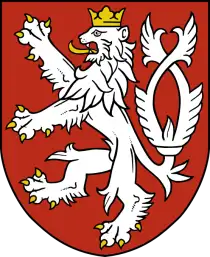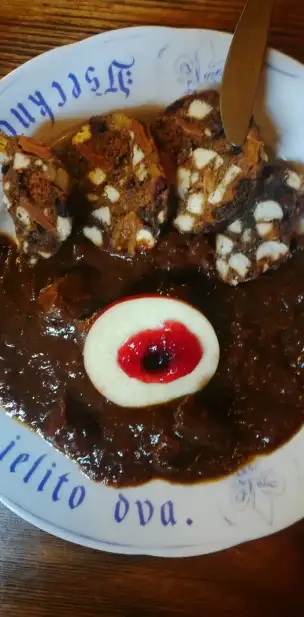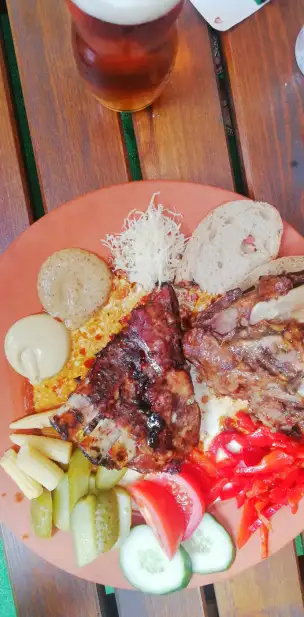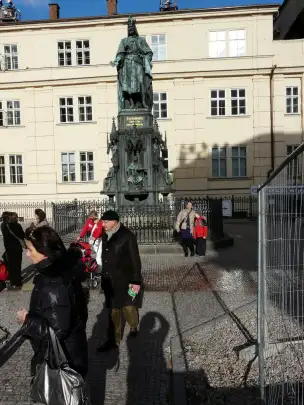The Czech Republic is a country with an exceptionally rich cultural and historical heritage, offering tourists a wide variety of attractions. From the charming city of Prague, through picturesque castles, to stunning landscapes and spa resorts. It is an ideal destination for lovers of culture, history, and active leisure. The rich cuisine, excellent beers, and warm hospitality of the locals make the Czech Republic a perfect place for an unforgettable holiday.
The capital, Prague, is one of the most beautiful cities in Europe, often called the “City of a Hundred Spires” thanks to its numerous churches and sacred buildings. Prague Castle, Charles Bridge, and the Old Town Square are just some of its most famous landmarks.
Czech cuisine is well known for its hearty, traditional dishes. The most famous specialties include svíčková na smetaně (beef sirloin in cream sauce), knedlíky (dumplings), and guláš (goulash). It is rich, flavorful, and based on simple, regional ingredients.
The Czech Republic is also one of the world’s largest consumers of beer, and Czech brewing has a long-standing tradition. Famous breweries such as Pilsner Urquell and Budweiser Budvar offer excellent beers that can be enjoyed both in major cities and in local pubs.
Odkryj najlepsze loty do blisko sto miast na różnych kontynentach. Sprawdź aktualne ceny i promocje.
Sprawdź loty do blisko sto miast na różnych kontynentachBrewing in the Czech Republic
Czech brewing is heavily focused on pale lagers, which may seem monotonous compared to the diversity of Belgian styles. While Belgians brew everything – from Trappist beers, lambics, saisons, dubbels, tripels, quadrupels, to sour and wild fermentations – in the Czech Republic one style dominates: the pale lager, mainly of the pilsner type.
In the past 10–15 years, a number of small craft breweries have emerged in the Czech Republic, experimenting with new styles. You can now find Czech craft NEIPAs, stouts, imperial porters, but these remain more of a niche for beer enthusiasts seeking novelty than a part of the mainstream.
Why are Czech beers so uniform?
- The pilsner tradition – Since 1842, when Pilsner Urquell was created, pale lagers have become the standard in the Czech Republic and worldwide. The Czechs perfected this style, which pushed other beers into the background.
- Consumer conservatism – Czechs love their beer and are reluctant to experiment. If something works well, why change it?
- Dominance of large breweries – Big Czech breweries (Pilsner Urquell, Budvar, Staropramen, Kozel) stick to tried-and-true recipes because that’s what makes the most business sense.
- Beer monoculture – Unlike Belgium, the Czech Republic never developed a strong tradition of monastic brewing, wild fermentations, or highly experimental styles.
Utopence and Nakládaný Hermelín
Utopence and nakládaný hermelín are classic Czech cold beer snacks – not main dishes in the traditional sense, but they hold a firm place in Czech food culture, especially in pubs and beer cellars.
- Utopenci (literally “the drowned”)
These are pickled sausages, usually fatty špekáček sausages, peeled, cut in halves or slices, and marinated in a vinegar brine with onions, garlic, peppers, sometimes chili or carrots. Occasionally, the sausages are slit open and stuffed with onion or mustard. - Nakládaný hermelín
This is the Czech version of pickled Camembert. Hermelín is a local soft-ripened cheese similar to French Camembert, but often denser and more pungent. It is marinated in oil with spices – such as garlic, onion, peppers, black pepper, chili, and bay leaf.
In Czech culinary culture, these are typical pochutiny – snacks served with beer in hospody, pivnice, and bars. They serve a role similar to Polish pickled herring, fermented cucumbers, or lard with bread in taverns – meant to whet the appetite and accompany drinking.
Czech Cuisine
Czech cuisine is a classic example of Central European cooking – hearty, calorie-rich, and based on meat, potatoes, dumplings, and sauces. On one hand, it shares much in common with German and Austrian cuisine, and on the other with Polish, Slovak, and Hungarian traditions. Yet, it also has its own original Czech touches, which give it a distinctive character.
Regional differences:
- Moravia – more dishes influenced by Hungarian and Slovak cooking, wines are more popular.
- Western and Southern Bohemia – more pork-based dishes and dumplings.
- Prague – a more international cuisine, but also a more refined version of traditional Czech cooking.
The Most Powerful State in the Empire
The peak of Czech influence within the Holy Roman Empire came in the 13th century, especially during the reign of Přemysl Ottokar II (1253–1278). He was one of the most powerful rulers of Central Europe in his time.
Under Ottokar II, the Kingdom of Bohemia expanded to unprecedented dimensions:
- In addition to Bohemia and Moravia, he ruled Austria, Styria, Carinthia, and Carniola.
- He also gained control over part of Silesia.
- His dominion over the Alps gave him control of key trade routes.
In terms of territory and wealth, Bohemia was at that time one of the strongest states in the Empire. The king was even called the Iron and Golden King — iron for his military prowess and golden for his riches. The Přemyslid era was a pivotal period in Czech history, when the kingdom could genuinely aspire to be the most powerful state in the Holy Roman Empire. Their ambitions brought great successes but also led to the downfall of the dynasty.
The most significant period of Bohemian power within the Empire was the second half of the 14th century, under the rule of Charles IV of Luxembourg (1316–1378). He was King of Bohemia and later Emperor of the Holy Roman Empire. His reign brought exceptional prestige to Prague and the Kingdom of Bohemia:
- 1356 – The Golden Bull: Charles IV established the rules for electing the emperor and secured Bohemia’s status as one of the Electorates of the Empire.
- Prague as the imperial capital: Under his reign, Prague became the most important city of the Holy Roman Empire, the emperor’s seat, and one of the largest cultural and commercial centers in Europe.
- Territorial expansion: The Czechs controlled not only Bohemia, but also Moravia, Silesia, Lusatia, and, for a time, even Brandenburg.














